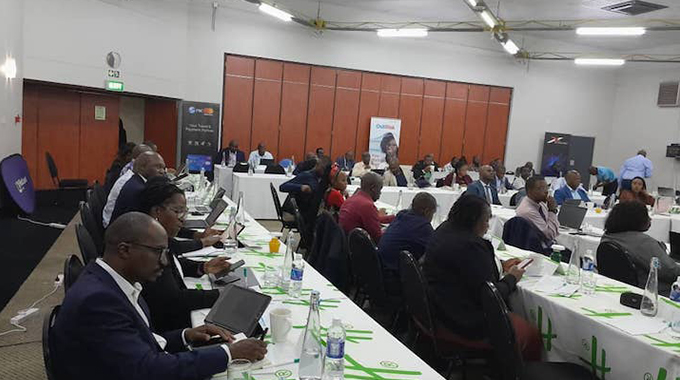Zimbabwe urged to address challenges faced by mining sector

Business Writer
Zimbabwe can realise the full potential of its mining industry if it addresses challenges such as infrastructure issues, inadequate power supply and regulatory uncertainties, Stockbroking Firm, Fincent Securities has said.
The mining sector is the country’s largest export earner having contributed 75,8 percent of the US$7,41 billion export earnings in 2022.
Fincent said Government also needs to finalise the amendments to the Mines and Minerals Act, the Gold Trade Act and the Precious Stones Act.
Other areas where Government has to engage relevant stakeholders to come up with win-win solutions include export tax on minerals, on beneficiated PGM’s, royalties and mining fees among others.
“Capital constraints and policy shifts remain the main downside risks for the sector and beneficiation remains a key issue hindering earnings growth,” noted Fincent.
Despite the challenges, Fincent says the mining sector is poised to remain “a crucial pillar of Zimbabwe’s economy, serving as a vital source of export earnings.
“This economic resilience is attributed to the presence of key minerals such as gold, platinum and the recently emerging lithium, which are expected to make substantial contributions to the country’s foreign exchange reserves,” the Stockbroking firm said in its Zimbabwe Mining Sector Report released last week.
Fincent said as the country moves forward, Government is expected to continue its efforts to revise policies and foster constructive engagement with stakeholders.
“These actions aim to establish a conducive environment that welcomes both foreign and local investors, further bolstering the mining sector’s growth and its contributions to Zimbabwe’s economic stability.”
The mining sector is experiencing heightened activity as evidenced by the re-opening of old mines and new ones coming on board.
The Government has set an ambitious target for the mining sector to realise US$12 billion by end of this year .
According to official reports, the mining sector has attracted more than US$6 billion in investments since 2018, growing its earnings from an average US$2,7 billion to about US$10 billion last year.
This has been largely driven by renewed investor confidence as “Zimbabwe is Open for Business”, leading to the opening of new small-scale and large-scale mining projects in different mineral rich areas.
Turning to investment opportunities, Fincent said producers of critical minerals (such as lithium, cobalt, copper, aluminum, graphite, and nickel) find themselves in an especially advantageous position.
“This advantage stems from market forecasts that anticipate a substantial shortfall in the supply of essential resources such as lithium and platinum compared to the growing demand for these materials over the next decade.
This comes as Fitch Ratings has revised its outlook for the global mining sector, shifting from a previously deteriorating stance to a more neutral one.
This change, according to Fincent, is attributed to several factors, including an upswing in demand from China following an earlier reopening of its economy.
“Additionally, the sector benefits from a more resilient global GDP growth projection for 2023 and a better balance between supply and demand for key mining commodities.
“The renewed demand emanating from China provides substantial support for Fitch Ratings’ more positive assessment of the mining sector’s outlook,” said Fincent. —Business Weekly/Chronicle











Comments